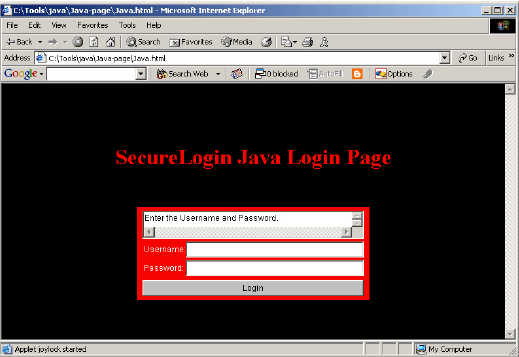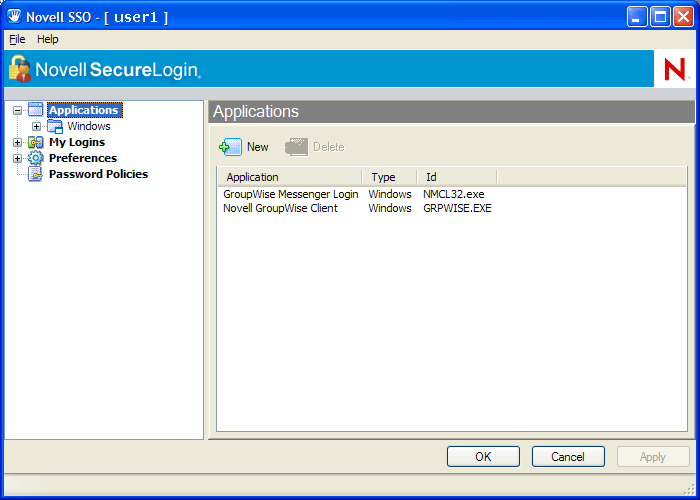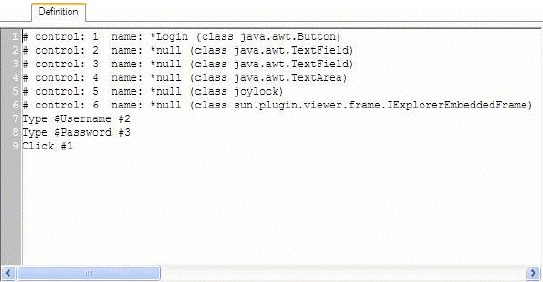8.3 Enable a Java Application
SecureLogin enables Java* applets and applications implementing AWT and SWING Java GUI components, as well as JavaScript. Both Java and JavaScript are included in the functionality labeled Java throughout the SecureLogin user interface. When a Java logon dialog box is recognized by SecureLogin, a confirmation message appears.
8.3.1 Prerequisites
- Install a Sun Java Runtime Environment Version 1.4 or later. (Microsoft* Java Virtual Machine is not supported.)
- Select the option for enabling Java applications during SecureLogin installation.
- Ensure that in the Preference Properties Table the value for Add application prompts for Java applications is set to Yes.
- Ensure that in the Preference Properties Table that the value for Allow single sign-on to Java applications is set to Yes.
The following JavaScript example is provided in the Tools folder on the SecureLogin distribution CD.
-
Start your Web browser.
-
On the File menu, click .
-
On the SecureLogin distribution CD, in <drive> , click java.html. The Open dialog box is displayed.
-
Click . The test Java page is displayed.

-
Then a message box appears. Click .

SecureLogin extracts and saves the Java control information identifying the login fields required to create the SSO definition.
-
Open the Personal Management Utility either by double-clicking
 , on the system
tray or by selecting .
, on the system
tray or by selecting . -
Click .The Applications pane is displayed.

NOTE:SecureLogin identifies the Java Web page by the URL or internet address of the application. You can change the application description, however, it is important not to change the application name, as this uniquely identifies the Web page.
-
In the navigation tree, under Java, double-click the application definition name.
-
The tab is displayed.
-
Click the tab. The Application Definition Editor is displayed.

The Java control information extracted from the Java login is displayed on the Definition tab. With this information, the SecureLogin application definition is built. The # symbol in the application definition denotes the text is a comment, therefore, the content of the application definition is currently information only. In this example #control: 1 is the Login button, #control: 2 is the Username box, and #control: 3 is the Password box.
NOTE:Determining the right control number in a Java application may be a case of trial and error when configuring your application definition. Java SSO-enabled applications must be configured centrally and tested before distribution by the administrator.
-
On the tab, specify the SecureLogin commands to build an application definition for the application.
In this example, the application definition to enter the username and password, and then click the Login button is:
Type $Username #2Type $Password #3Click #1
-
Click to save changes and close the Personal Management Utility.
-
Return to Microsoft Internet Explorer and press the Ctrl + r keys to reload the test Java logon. The Enter your credentials dialog box is displayed.
-
In the field, specify the user name.
-
In the field, specify the password.
-
Click . The user name and password credentials are now saved for the application in SecureLogin, and you are logged on to the application.
You can configure additional Java logon functionality in the application definition. For more information, see Novell SecureLogin 6.0 SP1 Application Definition Guide.